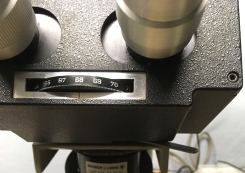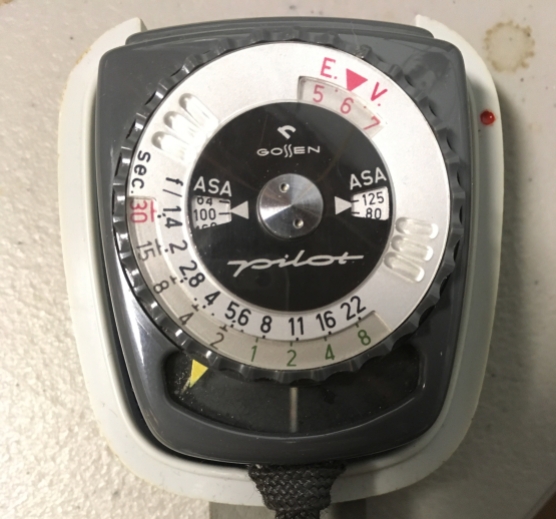The earlier posts of this series have covered everything up to making the exposure, and took a bit of a detour to outline a method for performing the work with an improvised camera. At this point one is expected to have a focusing screen, a loaded 4×5 film holder, and an attachment or integrated camera compatible with the same. Two additional items that will prove helpful but are not strictly necessary are a simple hand-lens (a linen tester or tripod magnifier is ideal), and a photographic light meter. I understand that there are smartphone apps that can serve as a light meter, but I have no recommendations on that front. The remainder of this installment will take the form of a checklist.
- Place the focusing screen on the bellows of the integrated or attachment camera.
- Properly align the illumination source, the brightest available is ideal but depending on the ideal color temperature for the film non-standard sources may be preferable to those used for normal visual work.
- Place a specimen on the stage either in the object holder of a mechanical stage or beneath the stage clips (even if neither are usually employed).
- Where available make use of voltage control or dimmer to moderate the lighting to a comfortable level for visual work. Neutral density filters may be employed where the lamp may not be otherwise moderated.
- Obtain clear visual focus at the ocular.
- Where required (as in the photomicrographic BalPlan head) divert the light path from the ocular into the path of the attachment or integrated camera.
- Remove any neutral density filters in use or turn up the dimmer to provide the color temperature dictated by the film.
- Where available set the shutter speed to “T” and activate the release to illuminate the cameras light path. If “T” is not present but “B” is employ a locking shutter release.
- Where available (as in the Integrated Camera System II) focus the image projected on the ground glass using the control on the camera body. If the image will not focus (as is likely if using an improvised camera) one will need to adjust the length of the draw-tube or camera bellows to achieve focus. Do not focus the image on the screen by operating the focusing mechanism of the microscope-doing so will exaggerate any optical defects present.
- Use a hand lens to view the image seen in a clear area of the focusing screen to achieve fine focus without the interference of the grain of the focusing screen.
- If available place a light meter over the center of the focusing screen and using the reading calculate the necessary exposure.
- Close the shutter mechanism and set the shutter speed founding the preceding step. If using an improvised system without a shutter place a light opaque filter (i.e. tin foil) in the path of the illuminator.
- Remove the focusing screen and replace with a loaded film holder.
- Remove the dark slide from the holder.
- Operate the shutter to make the exposure.
- Replace the dark slide.
- Note the settings that were used to make the exposure if known. The voltage of the illuminator, color temperature, light meter reading, setting of the cameras control, and shutter speed are of particular usefulness. One should of course note the slides catalogue number, the objective, and ocular (if using one in the cameras light path), used.




